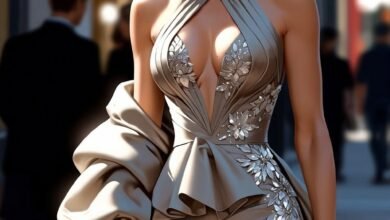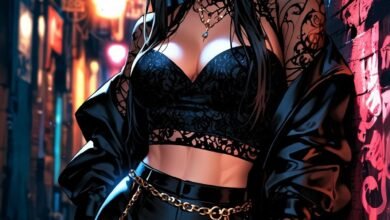Beginners Eye Makeup Tutorial | Everything You Need To Know | How To Apply Eyeshadow
for today's money makeup lesson I'm gonna go into a lot more detail than I usually do so I hope that you guys enjoy this and let's get started prepping the canvas so I like to start off by creating a little bit more framework and creating a clear canvas for me to work on and this helps me see the end result just that little bit clearer with every step that I do but it also creates a framework for me to work off so I can see the shapes that I'm trying to create so you want to start off from this point rather than this one so how do you do that so I start off by applying my moisturizer all over my face including around the eye area I apply a very sheer amount of concealer or foundation around the eye area and the eyebrows now I only apply a sheer amount because if I need to I can always just cleanse this away but a sheer amount creates a blank canvas for me to work off I also fill in my brows now brows are really personal so I'm not gonna tell you what to do but what I like to do is just darken from the center out making sure that this is nice and deep and filled in and then just on the inside of the brows I use whatever is left over in the brush to create some fine a little hairs and now we can see our eye shape just that little bit clearer our brows are filled in and we're ready to apply our eyeshadow you might be wondering why I don't just do my entire face well it's kind of personal preference for me I find I get enough frame work from just filling in my brows and I can really see the shape that I'm creating by applying a small amount of concealer just around the eyes which I can then clean up if I have any liner mistakes or fall out and it's not gonna mess up an entire beautiful face of makeup but it is personal preference preparing the eyelids so why do you need to prep the eyelids surely eyeshadow this design for the eyes should just be able to go onto the lids well the eyelids are actually really thin and delicate and sheer and makeup doesn't hold on to thin delicate areas of skin compared to other areas of the face or body that's why when you swatch something on say your wrist or your fingertips it looks a lot more vibrant compared to when it's applied on the lids the eyeshadows need something to hold on to so there's three different things that you can try concealer this is great because you probably already have a concealer and you can just apply this on the lids primer which is designed for the actual lids itself and will really hold on to eyeshadow and cream eyeshadows these are a cream form of an eyeshadow and treally create a nice base for the rest of your shadows to sit on top of my personal preference is to mix concealer with my primer so I use it at about a two-to-one ratio because my eyelids are kind of dry eye shadow primers can be quite drying on the lids and if you already have dry skin it creates unwanted texture so sharing it off with a little bit of concealer will create a nice base and this is something that I do for mature skin as well however you want to mix it up to make sure it works for you for the oily your lids or people that find their eye shows just does not stick and stay on you might want to use more eyeshadow primer than concealer once you applied the primer or concealer you might find it kind of damp and sticky before it sets that's actually totally normal and this can actually help in your application the sticky damp base will grab hold of the powder like nothing else so if you're doing a smoky eye or a very colorful look a sticky base will really help you however it does make blending a little bit more difficult so for beginners I would actually recommend applying a sheer amount of a neutral eyeshadow over the base to make sure it's a soft powdery effect don't worry your shadows will still hold on to this base it'll just make the blending process so much easier parts of the eye the main part of the eye is clearly the lid and this can be separated into three or four different sections and then you have your crease this is where your lid creases into your eye shape and then you have your brow bone this is not technically the brow bone because the brow bone is lower than this but it actually refers to the little area just underneath your brows your crease area is probably the most important a lot of people refer to the crease as just this one line it's actually not the best way to think about it is any area above this point but stopping underneath the brow bone or the little area underneath the brows and when you're blending you really just want to stay within these points now this looks really complicated I promise you it's not when you're applying eye shadows you want to keep them within these imaginary points using the edge of the nose edge of the eye and the edge of the brow you create an imaginary line this is the stopping point for most blending and then for that inner part of the eye you basically want to create a parallel line that stops beyond the tear duct this is all about keeping your blend within these two points picking eyeshadows so how many eyeshadows do you actually need to create an eye makeup look well for any basic look you only need three things light a medium and a dark so your light color is at least one shade lighter than your skin tone but can be like four or five or six shades lighter depends on the look that you're creating and you of your darker shade which should be at least one shade darker but can be anywhere up to four or five or six shades darker and then you have your medium shade so this is somewhere in between your light and your dark it's almost as if you mix your light and dark together then you get your medium shade and it doesn't have to just be with neutrals this also works with say colors like purple we have a light purple a dark purple and a medium purple however the medium shade can actually be swapped out for more of a neutral color so this color here is still in between these but it's just a little bit more muted and neutral because it's a light pink instead of a purple and these shuttles are often referred to as the highlight the mid-tone or transition shade and the contour so the highlight shade is basically what it is it's a highlight so it's a light you also have a your contour which we all know is for deepening and darkening something so that's your dark and then you have your mid-tone or as a lot of youtubers refer to this as a transition shade personally I feel like that's a good term to use but I like to use mid-tone because I feel like it's a better explanation of exactly what this transition shade is it's a middle tone it's in between our light and our dark but you will hear a lot of people refer to this as a transition shade make up brushes there's really only a few makeup brushes that you need the most important being a good blending brush this is gonna create that soft blended appearance a small brush something like a pencil brush or anything that's nice and small that y



